It seems that whenever you are trying to print something with an image, you often have to navigate confusing legal terms like copyright and trademark printing. It’s easy to get lost in the terminology of it all. But rest assured that there are plenty of ways to enjoy the benefits of copyright without getting tangled up in legal jargon.
This guide explains what copyrights and trademarks are and answers several related questions that you might have. It’s the perfect place to start if you want to learn more about how copyright and trademark printing can benefit your business!
1. What Is Intellectual Property?
Intellectual property, or IP, is a legal concept that refers to creations of the mind for which exclusive rights are recognized. Intellectual property can include intangible assets such as copyrights, patents, trademarks, industrial design rights, trade secrets, or goodwill.

Additionally, it includes material objects that embody intellectual creations (such as books or films) when they are characterized by at least one of three specific traits (novelty, utility, or beauty). When you own an IP, you get certain rights relating to its use or ownership.
2. Types Of Intellectual Property Laws
There are several types of intellectual property laws that are related to copyright and trademark printing.
2.1 Copyright laws
The copyright law is legal protection granted to authors of creative works and other intellectual works. Each country has its own laws on copyright, but there are substantial similarities. Works in which copyright can subsist include literary works; musical works (including any accompanying words); dramatic works; pantomimes and choreographic works; pictorial, graphic and sculptural works; motion pictures and other audiovisual works; sound recordings.
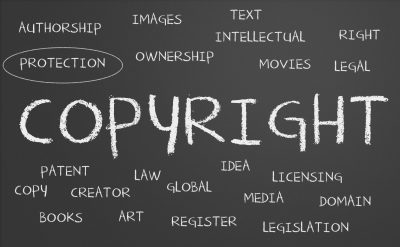
Copyright does not protect facts, ideas, or systems. The ownership of a copyright may be transferred by means of an assignment or license agreement. The owner of a copyright has several exclusive rights:
- reproduce (copy) it;
- prepare derivative works based upon it;
- distribute copies or phonorecords of it;
- transmit it by means of any device or process (as in online transmissions);
- display it publicly;
- perform it publicly;
- and/or broadcast it.
2.2 Trademark laws
A Trademark is a distinctive mark used by an individual, business organization or other legal entity to identify that particular product or service as originating from a unique source. This could be anything from a name, slogan, device, sound, color scheme or anything else that identifies one seller’s products or services as distinct from those of another.
The intent of trademarks is to prevent confusion among consumers and competitors by providing clear identification of a product or service’s origin. A trademark owner can be an individual who uses his/her name legally in doing business. He/she can also be a company whose brand name has been legally registered with their country’s patent office.

2.3 Patent laws
A patent is a set of exclusive rights granted by a sovereign state to an inventor or their assignee for a limited period of time in exchange for public disclosure of an invention. There are two types of patents available:
- Utility patents, which protect how an invention functions;
- Design patents, which protect how something looks.

Different countries’ patent laws (also called patent systems) vary in their requirements for granting patents but generally follow similar procedures. Utility patents last for 20 years from when they’re granted by a patent office. Design patents last 14 years from when they’re granted. Even if you have a patent, it doesn’t mean someone can’t make a knockoff. It’s just illegal to do so.
3. Public Domain and Fair Use
Understanding public domain and fair use are necessary for terms of copyright and trademark printing.
3.1 Public domain
In order to best understand how copyright and trademark printing works, it helps to have a basic understanding of what the public domain is. In short, public domain refers to intellectual property that’s free from any copyright restrictions. Though it is sometimes mistakenly referred to as public property. As there are currently no legal restrictions on these materials, they can be reproduced or shared without consent.

Public domain refers not only to copyright-free works, but also materials ineligible for copyright protection. Works published before 1923 are typically public domain (unless you can prove someone was still paying royalties on them).
3.2 Fair Use
If you’re familiar with copyright and trademark printing law, you’ve probably heard of fair use. Fair use is a legal doctrine that is used to determine whether a copyrighted work can be reproduced or used without obtaining permission from or paying royalties to, its owner.
It’s generally accepted that fair use occurs when:
- a portion of a work is reproduced;
- for criticism or commentary;
- in a non-profit educational context;
- not commercially.
In other words, it’s less about what you do with copyrighted material than why you do it. When in doubt, ask for permission rather than assuming what you’re doing constitutes fair use.
4. Safety Checklist For Print On Demand Businesses
As a print on demand business, you should be careful and follow the safety checklist below regarding copyright and trademark printing.
4.1 Avoid using trademarks or copyright
Using a trademarked name or copyrighted image can lead to trouble. Even if you’re using it in good faith, you might accidentally infringe on someone else’s rights.
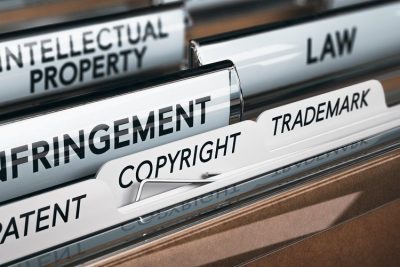
To avoid such problems, don’t use anyone else’s trademarks or copyrights in your print work unless they’ve given you explicit permission. And if there’s any doubt about whether what you want to print will run afoul of someone else’s rights, play it safe and find another source of information or imagery.
4.2 Check copyright and trademark records
As a small business owner, you may be selling a product that contains materials protected by copyright and trademark printing policies. This is especially true if you’re selling items like t-shirts, magnets, coffee mugs, etc. It’s your responsibility to check these records before you produce and sell items. If someone else has copyrighted or trademarked a design in your item(s), you can get into serious legal trouble for producing and selling those items.
If there is a conflict, use a different design. If it’s unclear if something is copyrighted or trademarked, it’s generally best to avoid it altogether. It’s always better to be safe than sorry when it comes to protecting yourself from an expensive lawsuit. You never know when some big company will come after you for your misuse of their product.
4.3 Get permission from the owner
If you want to print a copyrighted or trademarked picture, quote, etc., you have to get permission from whoever owns it. No matter which country you are in. If you’re unsure whether or not something is copyrighted, there are some easy ways to figure it out.
For one thing, if there’s a copyright symbol anywhere on it (©), that means it’s been registered with either the US Copyright Office or with the Copyright Clearance Center (CCC). If no registration info exists, then go ahead and use it, but make sure you ask for permission first.
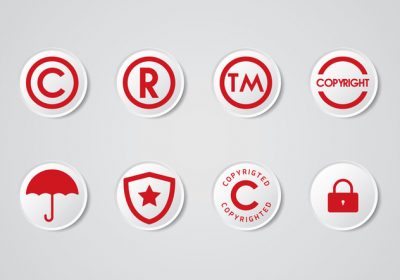
In addition to copyright infringement liability, failing to do so could hurt your reputation as a professional print on demand business. As potential clients may think that you are not scrupulous about intellectual property issues. For large orders of copyrighted material, we recommend setting up an exclusive contract in order to avoid infringement issues entirely.
4.4 Consult a legal professional
If you need any printed materials with your trademark or copyright on them, be sure to consult a legal professional before moving forward. This will protect you from accidentally breaking any laws by violating someone else’s intellectual property rights. Chances are that they will be able to guide you through your options and help you find a solution that fits your specific needs.

This may seem like common sense. But it’s surprising how many people are caught off guard when they break one of these laws without even realizing it until they get a cease-and-desist letter from a lawyer. Don’t assume that just because your name is on something that you can do whatever you want with it. You could be in for an unpleasant surprise.
4.5 Protect Yourself
When you’re starting your print on demand business, registering with local, state, and federal agencies is a must. You should take care of both copyright and trademark printing registration as soon as possible to protect your artworks. That said, it’s important to note that registration for both can be done retroactively if you plan on using someone else’s mark or copyrighted material in your work.
While there are advantages to registering your trademarks or copyrights before using them, there are no hard-and-fast rules about when to do so. Ideally, take care of all your registrations at once during month one of your new business startup. And, save yourself some stress!
5. Some Common Copyright & Trademark Printing Policy in Ecommerce
5.1 eBay
eBay has rules on copyright and trademark. Sellers must comply with eBay’s Copyright & Trademark Usage Policy (C&T policy) when using eBay’s services. The C&T policy prohibits listing content that infringes or misappropriates others’ intellectual property rights.
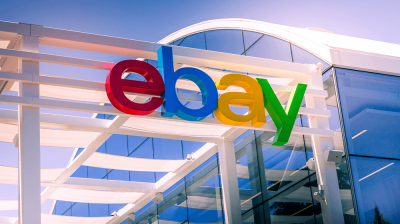
In accordance with the C&T policy, after receiving a notice of alleged copyright or trademark infringement, eBay may disable certain features on your account to ensure continued compliance with applicable laws. eBay can cancel your listing if you are selling unlicensed copies of a copyrighted or trademarked item. It is your responsibility to verify that any item you are planning to sell on eBay is not copyrighted by another party.
For more information about eBay’s copyright and trademark printing law, click here.
5.2 Amazon
When it comes to intellectual property, Amazon has a no-tolerance policy. As soon as they discover that any copyrighted material or trademarked items are for sale on Amazon, they will take action immediately in an effort to remove these listings and protect authors from copyright or trademark infringement. What qualifies as an infringement will vary based on what country the product is sold in.

If you find such activity going on with one of your products, be sure to contact Amazon as soon as possible. It’s best not to wait. Once a product is removed, it may be difficult or impossible to get back on at all.
Click here for more information.
5.3 Etsy
Items can be listed on Etsy without a copyright or trademark notice, but copyright and trademark owners should list those rights. You may not sell items with copyrighted or trademarked logos, wording, lettering, characters, symbols, or other artwork on them.

You may not make claims about goods you are selling based on a protected design or name. This policy applies to printables. If your listing violates Etsy’s copyright and trademark policy, it will be removed from Etsy. In most cases, they will give you a chance to correct any issues prior to removing your listing(s). If necessary, however, Etsy will remove your listings permanently.
More information about Etsy’s copyright and trademark printing laws can be found here.
6. Copyright And Trademark Printing FAQs
Below are some of the most frequently asked questions regarding copyright and trademark printing.
6.1 How do I check copyright?
You’ll need to visit a search engine (such as Google) and type in copyright (insert year or phrase here) along with your work. You can also check with an attorney or do some research online. Remember that works created on or after January 1, 1978, will be copyrighted from that date forward, so you only have to check the copyright of works published since then.
6.2 How to get permission to print copyrighted material?
Getting permission Copyright law protects original works of authorship. The Copyright Act grants copyright owners the exclusive right to reproduce their copyrighted work or authorize others to do so. Permission must be obtained from the rights owner in order to reproduce or use any copyrighted work. There are two ways to obtain permission:
- seek a formal written license agreement;
- where reproduction is a one-time occurrence (such as for specific articles of clothing), send a letter requesting permission to use copyrighted material.
6.3 When can I use copyrighted material?
Copyright law doesn’t give you a lot of guidance on when you can or can’t use someone else’s work. The law considers each case individually, balancing your right to express yourself with others’ rights to own and profit from their creations. There are two parts to copyright: protecting your ability to make copies (reproduction rights) and protecting your ability to express an idea in new ways (distribution rights). Reproduction rights are what we typically think of when we say copyright protection, but distribution is also protected.
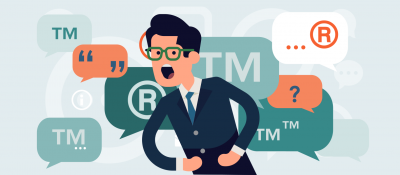
When using copyrighted material, you must provide attribution to its author or creator. If you wish to use it for profit, you should seek permission from its owner. You may also want to look into trademark printing. Note that if your use of copyrighted material falls under fair use provisions you do not need to get permission from or pay royalties to the copyright holder.
6.4 What happens when you violate copyright and trademark printing laws?
If you’re found to be in violation of a trademark or copyright, you’ll likely have to take down your offending items. In addition, you could face fines and other penalties from a court of law. Getting sued for violating trademarks/copyrights is common enough that many companies offer pre-made cease-and-desist letters as part of their standard business plan.
Violation of trademark law can also have a huge impact on your company’s reputation. Not only is it illegal, but it can also result in damage to your company’s brand or, in some cases, financial loss.

6.5 What should I do if someone violates my copyright and trademark printing rights?
If you feel that someone else is violating your copyright or trademark rights, you should take legal action immediately. Fortunately, government agencies exist to protect intellectual property owners. An experienced attorney can help advise you about what actions need to be taken in order to defend your copyright or trademark rights when they are violated by another party.
7. Wrapping Up
The copyright and trademark printing regulations can be confusing, especially if you’re not familiar with how to deal with intellectual property rights and the law surrounding them. Fortunately, it’s actually fairly simple, as long as you carefully research in advance before using any published images. Otherwise, think outside of the box and create your own!
Disclaimer: This article does not act as legal advice and we are not responsible for any misleading information or action. For more information, consult with your legal professional before taking further steps.
Read more

